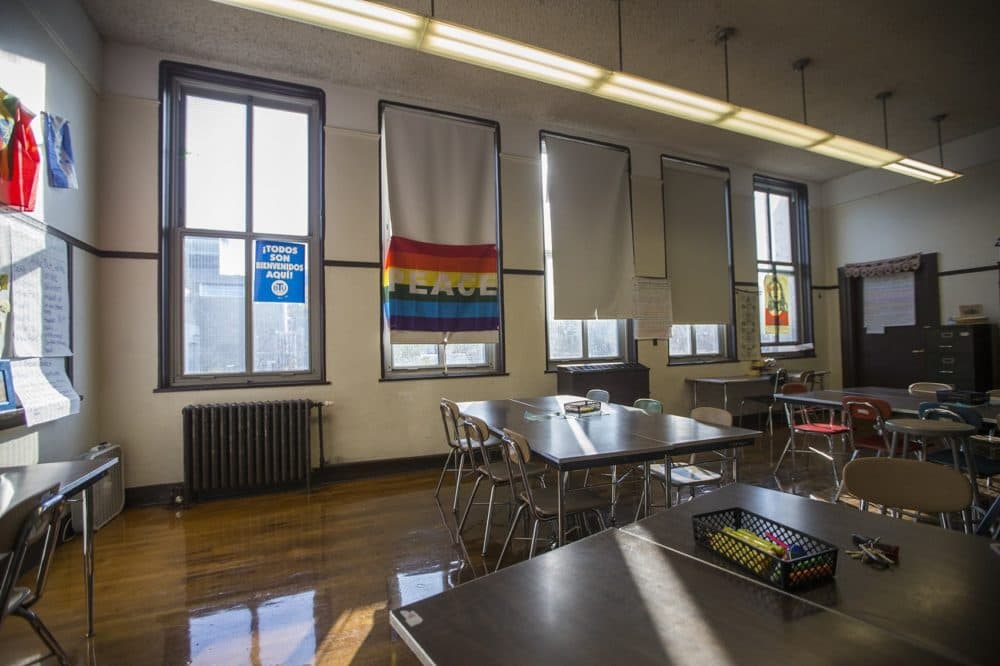Advertisement
Field Guide to Boston
More Boston Public School buildings will start the year with air conditioning

For the first time in its 146-year history, the Sumner Elementary School in Roslindale will begin the school year with air conditioning. The addition has already made a difference to teachers, many of whom are busy preparing and decorating their classrooms for Boston Public Schools' opening day on Thursday.
"In the past I would have to bring so much water because it would be so hot and humid without the air conditioner," said Meghan Welch, the school's principal.
The Sumner school building is one dozens of city buildings that BPS officials have been working to retrofit with window air conditioning units over the last two years, according to a back-to-school memo released last Wednesday.
The Sumner school building received classroom units in June. And as the first day of school nears, Welch is glad that students will be able to learn in a more comfortable setting, especially since temperatures in Boston can remain hot and sticky in early fall and can soar by late spring.
BPS is in the last stage of a $7 million effort boosted by COVID relief funding to cool classrooms in some of its oldest buildings. The project is part of a larger plan called the Green New Deal for Boston Public Schools, aimed at improving the quality and sustainability of school facilities.
Nine buildings are still undergoing the air conditioning installation process and 10 more are waiting to begin, including the Mozart Elementary School in Roslindale, the Mather Elementary School in Dorchester and the James Otis Elementary School in East Boston.
"This is a big deal," said Brian Forde, the executive director of Boston Public Schools' facilities department. "Some of our buildings are more than 100 years old."
According to a district spokesman, about half of BPS's 130 buildings were constructed before World War II.
Old buildings are a concern due to poor indoor air quality, which can affect the ability of students and staff to focus when temperatures climb. According to a 2021 study published in the scientific journal Nature, students exposed to hot temperatures "exhibit reduced learning." The study's authors reported measurable negative impacts on student achievement for each additional school day when temperatures rose above 80 degrees Fahrenheit.
Retrofitting some of Boston's aging school buildings with window AC units was a heavy lift, Forde said. In addition to ordering and installing the custom-built window units, officials also had to upgrade most of the buildings' electrical systems — Forde says they weren't designed to power anything more than light bulbs. Contractors also had to work off-hours during the academic year so repairs wouldn't interfere with student learning during the day.
Teacher advocates say the effort has been a long time coming.
"This is something that teachers, students and parents have been advocating for for many many years," said Jessica Tang, the president of the Boston Teachers Union. "The heat becomes a huge distraction from learning."
The progress has been especially helpful for students and staff attending summer school, she added. This was the first summer that all 63 city buildings hosting summer learning programming were equipped with air conditioning.
"It used to be very challenging to teach summer school," Tang said, recalling her experience teaching during the summer months in Boston. "It was oppressively hot."
According to the BPS back-to-school memo, officials successfully installed more than 3,800 air conditioning units at 78 schools whereas last year, only 20 schools held a total of 916 AC units.
